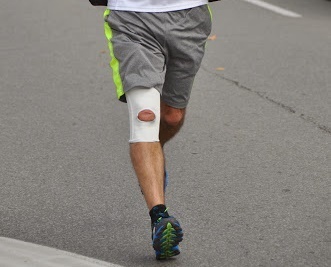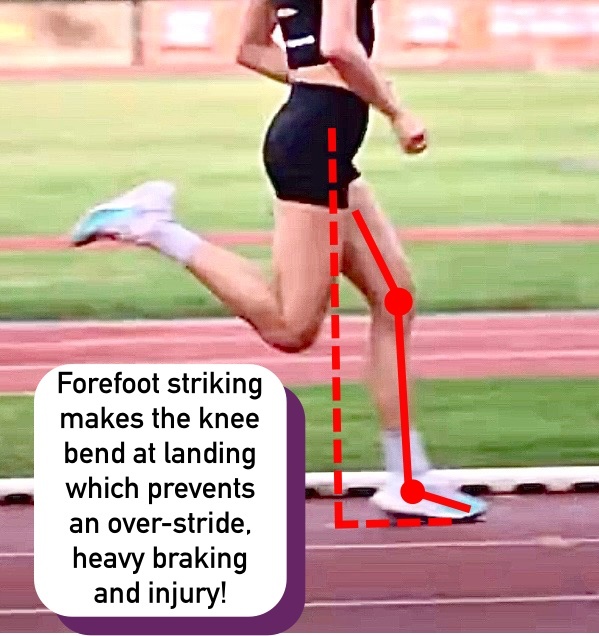The most persuasive evidence on running-related knee injuries concluded the two major sources of knee pain and injury are heel striking (here’s why) and a knee brace! Yes, you read that correctly, knee braces cause knee injuries, and here’s how…

Wearing a knee brace when running is a solution for knee pain we’re used to hearing, but now studies report knee braces are a big source of injury!
A study in the journal, Acta Orthop Belg, found that runners who wore a knee brace had an unusual rise in anterior compartment pressure in the lower leg, resulting in lower leg pain.
- The researchers found that runners running at a speed of 8 km/hr while wearing a knee brace had a significant increase in anterior compartment pressure from 49.1 mm Hg to a pain-inducing level of 95.6mm Hg!
Another study proved that knee braces do more harm than good by pushing your stride out of balance. A study in the American Journal of Sports Medicine reported that running with a knee brace moved ankle and knee-joint mechanics from their ideal, neutral position:
- The researchers emphasized that immobilizing the knee-joint with a knee brace restricted the knee’s range of motion, which altered foot strike mechanics, causing the leg to move less efficiently and with greater force.
This more than suggests that wearing a knee brace while running does not work consistently well as reliable knee protection, however there is enough evidence along with growing anecdotal reports showing that optimal, sustained knee protection is more immediately apparent with forefoot running! This is because the mechanical properties of forefoot running is critical to sufficiently protecting the knees:

When running, forefoot striking (shown above) automatically causes the knee to bend and flex, which brings initial foot strike position much closer to your hips (i.e center of mass). The functional and performance advantages of this is it reduces brake time, while raising energy efficiency.
So, what does this mean for the knees?
It means the brake force is so low in forefoot running that the compressive wave responsible for knee injury is actually eliminated, while allowing the foot a firmer hold (because forefoot striking is a larger foot contact area), offsets bending and twisting from cascading up the lower leg to the knee.
This is why forefoot running makes a significant difference in sustainably safeguarding your knees, not to mention, there’s also growing anecdotal evidence suggesting that forefoot running literally cures knee pain than not. Read more here about how forefoot running does a better job at protecting the knee, and the entire body from injury than heel strike running!

References:
Jerosch, J., Castro, WH., Hoffstetter, I and Reer, R. Secondary effects of knee braces on the intracompartmental pressure in the anterior tibial compartment. Acta Orthop Belg. 1995; 61(1):37-42.
Regalbuto, MA., Rovick, JS and Walker, PS. The forces in a knee brace as a function of hinge design and placement. Am J Sports Med, 1989; 17(4):535-43

Bretta Riches
BSc Neurobiology; MSc Biomechanics candidate, ultra minimalist runner & founder of RunForefoot. I was a heel striker, always injured. I was inspired by the great Tirunesh Dibaba to try forefoot running. Now, I'm injury free. This is why I launched Run Forefoot, to advocate the health & performance benefits of forefoot running and to raise awareness on the dangers of heel striking, because the world needs to know.
Latest posts by Bretta Riches (see all)
- Does Foot Strike Really Matter in Running? YES! - 17/04/2024
- Heel Lifts Increase Injury in Runners - 16/04/2024
- Are Minimalist Shoes Good for Seniors? YES! - 14/04/2024

